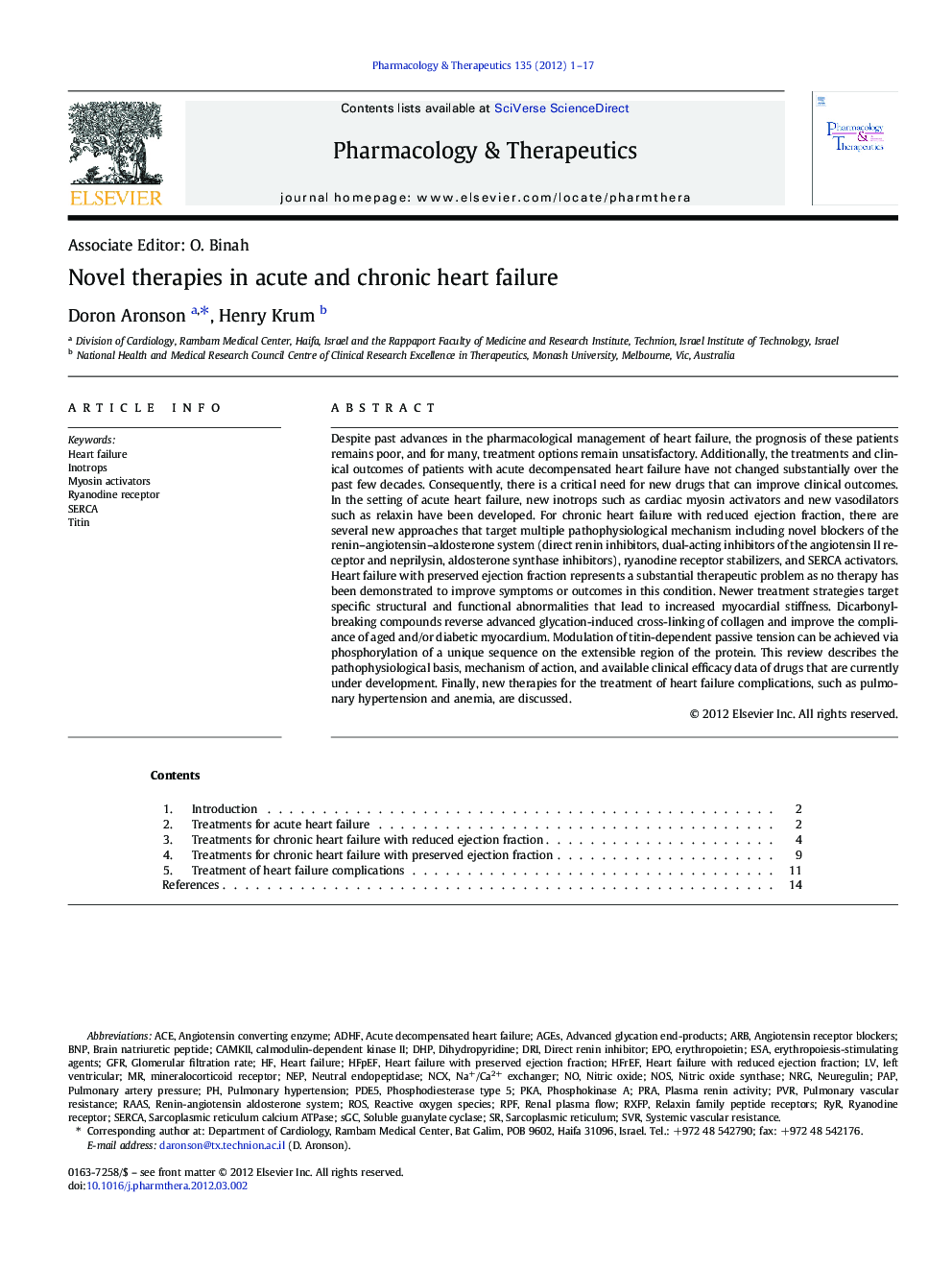| کد مقاله | کد نشریه | سال انتشار | مقاله انگلیسی | نسخه تمام متن |
|---|---|---|---|---|
| 2563304 | 1127516 | 2012 | 17 صفحه PDF | دانلود رایگان |

Despite past advances in the pharmacological management of heart failure, the prognosis of these patients remains poor, and for many, treatment options remain unsatisfactory. Additionally, the treatments and clinical outcomes of patients with acute decompensated heart failure have not changed substantially over the past few decades. Consequently, there is a critical need for new drugs that can improve clinical outcomes. In the setting of acute heart failure, new inotrops such as cardiac myosin activators and new vasodilators such as relaxin have been developed. For chronic heart failure with reduced ejection fraction, there are several new approaches that target multiple pathophysiological mechanism including novel blockers of the renin–angiotensin–aldosterone system (direct renin inhibitors, dual-acting inhibitors of the angiotensin II receptor and neprilysin, aldosterone synthase inhibitors), ryanodine receptor stabilizers, and SERCA activators. Heart failure with preserved ejection fraction represents a substantial therapeutic problem as no therapy has been demonstrated to improve symptoms or outcomes in this condition. Newer treatment strategies target specific structural and functional abnormalities that lead to increased myocardial stiffness. Dicarbonyl-breaking compounds reverse advanced glycation-induced cross-linking of collagen and improve the compliance of aged and/or diabetic myocardium. Modulation of titin-dependent passive tension can be achieved via phosphorylation of a unique sequence on the extensible region of the protein. This review describes the pathophysiological basis, mechanism of action, and available clinical efficacy data of drugs that are currently under development. Finally, new therapies for the treatment of heart failure complications, such as pulmonary hypertension and anemia, are discussed.
Journal: Pharmacology & Therapeutics - Volume 135, Issue 1, July 2012, Pages 1–17